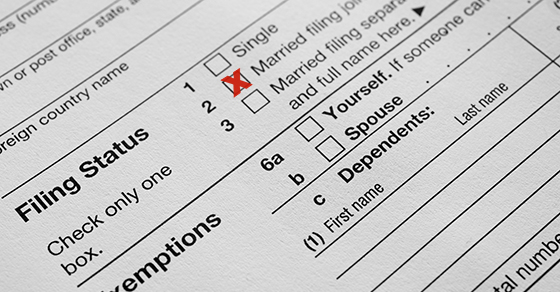If you file a joint tax return with your spouse, you should be aware of your individual liability. And if you’re getting divorced, you should know that there may be relief available if the IRS comes after you for certain past-due taxes.
What’s “joint and several” liability?
When a married couple files a joint tax return, each spouse is “jointly and severally” liable for the full tax amount on the couple’s combined income. That means the IRS can come after either spouse to collect the entire tax — not just the part that’s attributed to one spouse or the other. Liability includes any tax deficiency that the IRS assesses after an audit, as well as penalties and interest. (However, the civil fraud penalty can be imposed only on spouses who’ve actually committed fraud.)
When are spouses “innocent?”
In some cases, spouses are eligible for “innocent spouse relief.” This generally involves individuals who didn’t know about a tax understatement that was attributable to the other spouse.
To be eligible, you must show that you were unaware of the understatement and there was nothing that should have made you suspicious. In addition, the circumstances must make it inequitable to hold you liable for the tax. This relief may be available even if you’re still married and living with your spouse.
In addition, spouses may be able to limit liability for a tax deficiency on a joint return if they’re widowed, divorced, legally separated, or have lived apart for at least one year.
How can liability be limited?
In some cases, a spouse can elect to limit liability for a deficiency on a joint return to just his or her allocable portion of the deficiency. If you make this election, the tax items that gave rise to the deficiency will be allocated between you and your spouse as if you’d filed separate returns.
The election won’t provide relief from your spouse’s tax items if the IRS proves that you knew about the items when you signed the tax return — unless you can show that you signed it under duress. Also, liability will be increased by the value of any assets that your spouse transferred to you in order to avoid the tax.
What is an “injured” spouse?
In addition to innocent spouse relief, there’s also relief for “injured” spouses. What’s the difference? An injured spouse claim asks the IRS to allocate part of a joint tax refund to one spouse. In these cases, one spouse has all or part of a refund from a joint return applied against certain past-due taxes, child or spousal support, or federal nontax debts (such as student loans) owed by the other spouse. If you’re an injured spouse, you may be entitled to recoup your refund share.
Whether, and to what extent, you can take advantage of the above relief depends on your situation. If you’re interested in trying to obtain relief, there’s paperwork that must be filed and deadlines that must be met. We can assist you with the details.
Also, keep “joint and several liability” in mind when filing future tax returns. Even if a joint return results in less tax, you may want to file a separate return if you want to be responsible only for your own tax.







